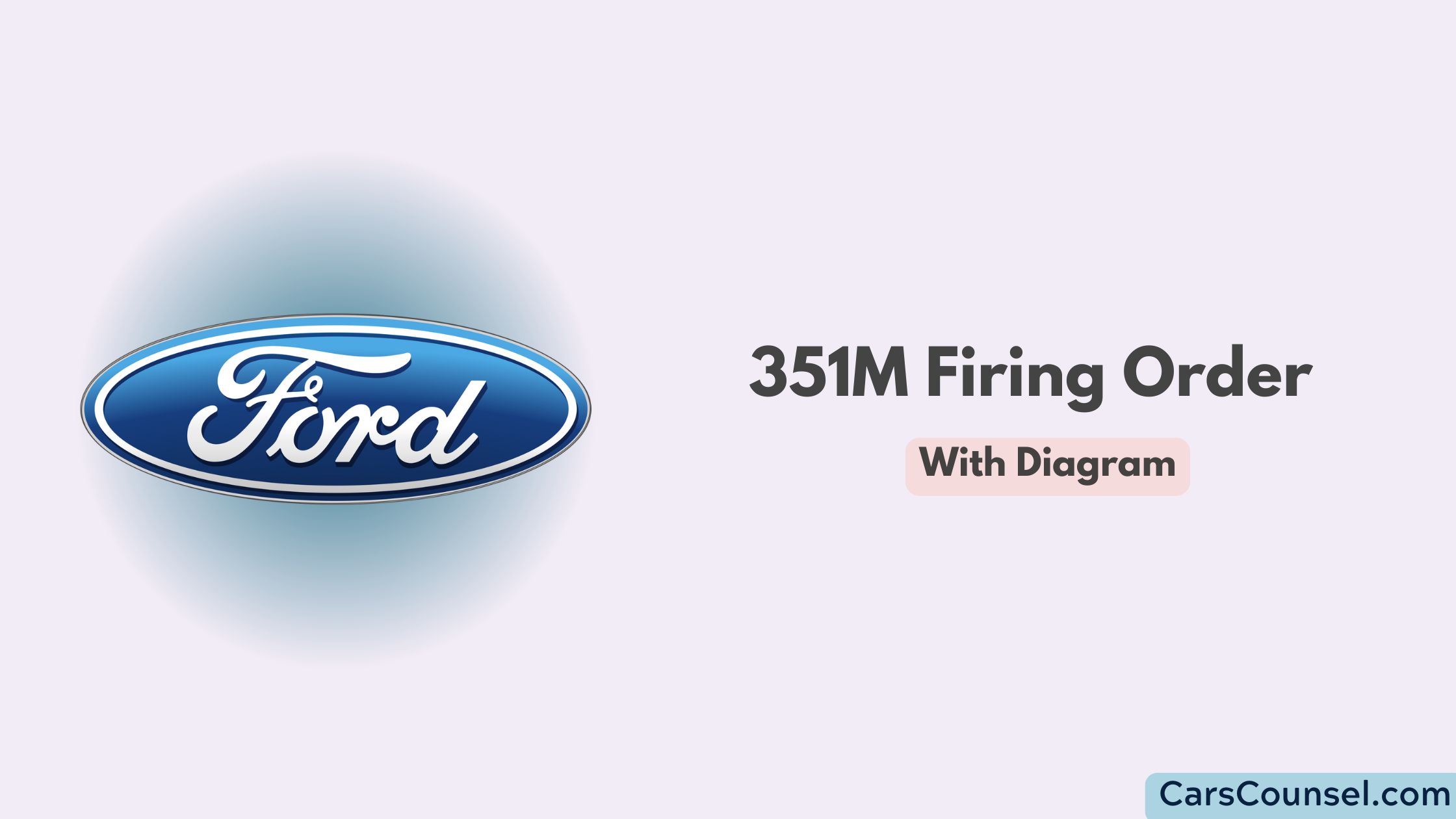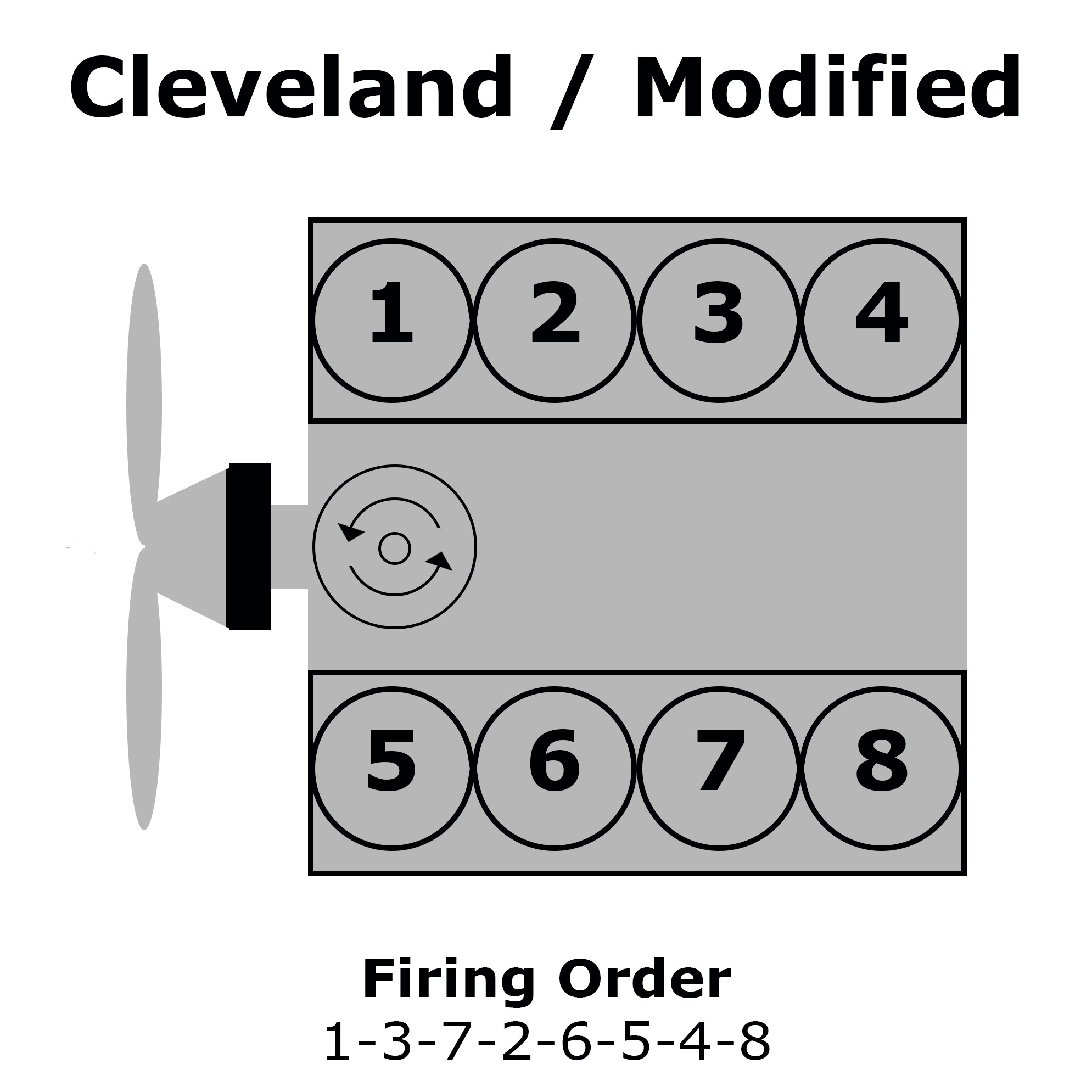The Ford 351M engine, part of the “Modified” series of V8 engines, is known for its reliability and use in trucks and larger vehicles during the 1970s and 1980s. Understanding the firing order of the 351M is critical for maintaining performance, diagnosing issues, and ensuring smooth engine operation.
This article will explore the 351 M’s firing order, its importance, common issues, and practical maintenance tips.

Quick Navigation
What Is the Firing Order?
The firing order refers to the sequence in which an engine’s cylinders ignite the air-fuel mixture to produce power. For the Ford 351M engine, the firing order is:
- 1-3-7-2-6-5-4-8

This firing order is standard for many Ford V8 engines, including the 351 Cleveland and 400 engines. It ensures balanced power delivery and smooth engine operation.
Why the Firing Order Matters
The firing order is fundamental to how the engine operates. Here’s why it matters:
- Balanced Power Delivery
The firing order ensures that the crankshaft receives power strokes in a balanced sequence, reducing vibrations. - Smooth Engine Operation
Proper firing minimizes rough idling and engine noise, contributing to a smoother driving experience. - Fuel Efficiency
Correct firing ensures complete combustion, reducing wasted fuel and improving fuel economy. - Longevity of Engine Components
Balanced firing reduces stress on internal components like the crankshaft and pistons, extending their lifespan.
Understanding the 351M Engine Layout
To fully grasp the firing order, it’s essential to understand the layout of the 351M engine:
V8 Configuration
The 351M engine is a V8, meaning it has eight cylinders arranged in a “V” shape, with four cylinders on each bank.
Cylinder Numbering
The cylinders are numbered as follows:
- Driver’s Side (Bank 1): 1, 2, 3, 4
- Passenger’s Side (Bank 2): 5, 6, 7, 8
Cylinder 1 is located at the front of the driver’s side, closest to the timing chain.
Crankshaft Timing
The crankshaft’s design ensures that each cylinder reaches its top dead center (TDC) in alignment with the firing sequence.
Symptoms of Firing Order Issues
Disruptions to the firing order can cause noticeable problems in engine performance. Common symptoms include:
- Engine Misfires
A misfire occurs when a cylinder fails to fire correctly, leading to rough operation and power loss. - Rough Idling
Incorrect firing can cause the engine to vibrate excessively or idle unevenly. - Loss of Power
An incorrect firing sequence reduces the engine’s ability to generate consistent power. - Increased Fuel Consumption
Misfires or incomplete combustion waste fuel leads to lower efficiency. - Check Engine Light
For vehicles with modern diagnostic systems, a firing order issue may trigger the check engine light. - Excessive Exhaust Smoke
A disrupted firing order can cause unburned fuel to exit the exhaust, producing excessive smoke.
Diagnosing Firing Order Problems
If you suspect a firing order issue in your 351M engine, follow these steps to diagnose the problem:
Inspect the Ignition System
- Check the spark plugs for fouling, wear, or damage.
- Verify that the spark plug wires are correctly connected and not damaged.
- Inspect the distributor cap and rotor for cracks, corrosion, or misalignment.
Use a Timing Light
- Attach a timing light to ensure the cylinders are firing in the correct order and at the correct intervals.
Perform a Compression Test
- Test the compression in each cylinder using a compression gauge. Low compression in one or more cylinders may indicate internal issues.
Examine the Timing Chain or Belt
- Inspect the timing chain or belt for wear or misalignment, which can disrupt the firing sequence.
Scan for Error Codes
- For vehicles equipped with diagnostic systems, use an OBD-II scanner to retrieve trouble codes related to misfires or ignition timing.
Fixing Firing Order Problems
Once the root cause of the firing order issue is identified, you can take the following steps to fix it:
Replace Faulty Spark Plugs
- Install new spark plugs that meet Ford’s specifications for the 351M engine. Ensure the plugs are properly gapped.
Replace Spark Plug Wires
- Replace damaged or worn spark plug wires, ensuring they are connected in the correct 1-3-7-2-6-5-4-8 sequence.
Replace or Adjust the Distributor
- Replace a faulty distributor cap or rotor. Align the rotor to the correct position to match the firing sequence.
Adjust Timing
- Use a timing light to adjust the ignition timing to the factory specifications for the 351M engine.
Replace the Timing Chain or Belt
- If the timing chain or belt is worn or misaligned, replace it and realign the camshaft and crankshaft.
Replace Sensors (if applicable)
- For modernized vehicles, replace faulty crankshaft or camshaft position sensors that may be disrupting the ignition sequence.
Preventing Firing Order Issues
Preventive maintenance is the best way to avoid firing order problems. Follow these tips to keep your 351M engine running smoothly:
- Schedule Regular Tune-Ups
Periodically inspect the ignition system, including spark plugs, wires, and the distributor. - Use High-Quality Components
Invest in premium spark plugs, wires, and distributor caps to ensure reliability and performance. - Monitor Engine Performance
Pay attention to changes in power delivery, fuel efficiency, or engine noise, as these can indicate potential problems. - Replace Timing Components as Needed
Replace the timing chain or belt and related components at the manufacturer’s recommended intervals. - Adhere to Maintenance Schedules
Follow Ford’s recommended maintenance intervals for the 351M engine to ensure optimal performance.
Engines with Similar Firing Orders
- 351W Firing Order
- Ford 8N Firing Order
- Ford Pinto Firing Order
- Ford 239 Y Block Firing Order
- Ford V10 Firing Order
FAQs About the 351M Firing Order
Why is the firing order important?
The firing order ensures smooth power delivery, efficient combustion, and balanced operation of the engine.
Can I fix firing order problems myself?
Yes, if you’re familiar with engine mechanics. Ensure the spark plug wires are connected in the correct sequence and the ignition timing is properly set.
What happens if the firing order is incorrect?
An incorrect firing order causes misfires, vibrations, loss of power, and potential engine damage.
Is the 1-3-7-2-6-5-4-8 firing order unique to the 351M?
No, this firing order is common among many Ford V8 engines, including the 351 Cleveland and 400.
Conclusion
The 351M firing order, 1-3-7-2-6-5-4-8, is a fundamental aspect of the engine’s performance and reliability. It ensures balanced power delivery, efficient combustion, and minimal vibrations, contributing to the engine’s longevity. Understanding the firing order, diagnosing potential issues, and performing regular maintenance are essential to keeping your 351M engine running smoothly. With proper care, this durable and powerful engine will continue to deliver reliable performance for years to come.

